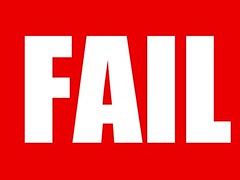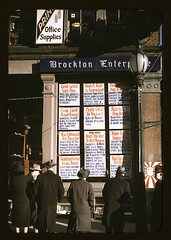Email newsletters are a great way to keep in touch with your prospects, get speaking engagements, and establish yourself as an expert.
It can be really tempting to take shortcuts when you use email marketing. After all, it’s so easy. Email is also cheap to send! And you can harvest address without paying anything at all! Free leads!
Sure, email marketing is easy and cheap and can be a great way to market your business without busting your budget.
However, if you’re just starting out, it’s easy to make “newbie” errors.
Before you press that send button, here are seven common email marketing mistakes to avoid (and how to fix them).
1. Cold email marketing
This means sending your newsletter or promo emails to people who didn’t sign up for them.
That includes people in forums, people you met at events, people you’ve been working with on a project, and email addresses from project group emails. It also includes searching the internet for contact information or buying (not renting) lists of email names, then sending email to the people you find.
It’s technically legal in the US. However, it will be perceived as spam and perception is what counts. Think of it this way, the FDA tells us that irradiated vegetables are perfectly safe. Doesn’t matter whether they really are. Nobody wants to eat them.
Try it in Canada and you could be in big trouble. They’ve recently enacted a tough anti-spam law which requires implied (or express) consent for any contact. Implied consent can include handing you a business card or publishing contact information. Express consent is written permission. More on this on the Canadian fight spam website.
Whether it’s in the US or elsewhere, it’s also likely to get your email address blacklisted and your account suspended. Then, none of your messages (even the legitimate ) will get through.
2. Using cc to send marketing emails
You get an email addressed to you and 20 other people. The person who sent it ccd everyone, rather than bcc. Some of those names and companies look awfully tempting.
They could be prospects. You could sell them stuff!. It’s a bad idea. If you really think you can help them, ask for an introduction from the person who sent the email. A warm contact is better than a cold one.
3. Using Outlook for email marketing
Do not use Outlook (or Mail or Thunderbird) to send mass emails. You’ll have to add and remove names manually. It’s easy to make a mistake and cc (rather than bcc) your list or not remove people quickly enough.
Letting people who don’t know each other see each others’ email addresses is unprofessional and makes you look like a newbie. Don’t bcc either.
Instead, use an ESP (email service provider). They’ll automatically add subscribers who opt-in, remove people who opt-out, and make sure that your subscribers don’t see each other. You’ll never have to worry about sending addresses in the open by mistake, or to people who asked for them. I use AWeber (affiliate link) for this. Really, it’s worth the few dollars for peace of mind! Any of these services will automatically add or remove names, and include the opt-out link.
4. No affiliate link disclosure
In the US, you must disclose if you have an affiliate relationship. Even if you’re not in the US it’s a good idea (in my opinion) to disclose your relationships. And, you can have fun with it. I like to say I get milkshake money. Chris Brogan calls it beer money.
5. No address
To comply with CAN-SPAM, you’ll need a physical address listed in every email. A P.O. box is OK. Just include it in your email at the bottom. A reputable email service provider will do this automatically.
6. One email, eight topics
I know, there’s a big fight about short copy vs. long copy (for sales letters, for blog posts, and for emails). It’s not a new fight. However, it is true that it’s harder to read large blocks of text online. Keep it within a page or a page and a half (about 500-600 words). Break up the text into small bits so it’s easier to read.
If you’ve got lots of news, spread it out over several emails. Just think, this way you’ll have eight newsletters’ worth without any extra work.
7. Being irrelevant
You may be excited about your new cat, Miss Eartha Kitty, but your subscribers signed up for design tips. Keep your emails focused on what your prospects and clients want to hear from you. If you like, put Miss Kitty up on Flickr, and send the link to your friends.
BONUS TIP:
I looked in my spam folder some time ago and found a message from Technorati. Definitely not spam. I think the images were the problem. Check your outgoing messages (email newsletters) with spam checker or another tool to minimize the chance they’ll get stuck. And, send a plain text version (this also works better for mobile users).
And remember, be careful out there (bonus points if you can identify the TV reference).





